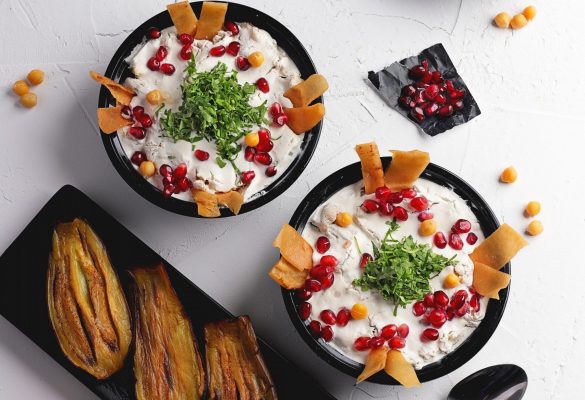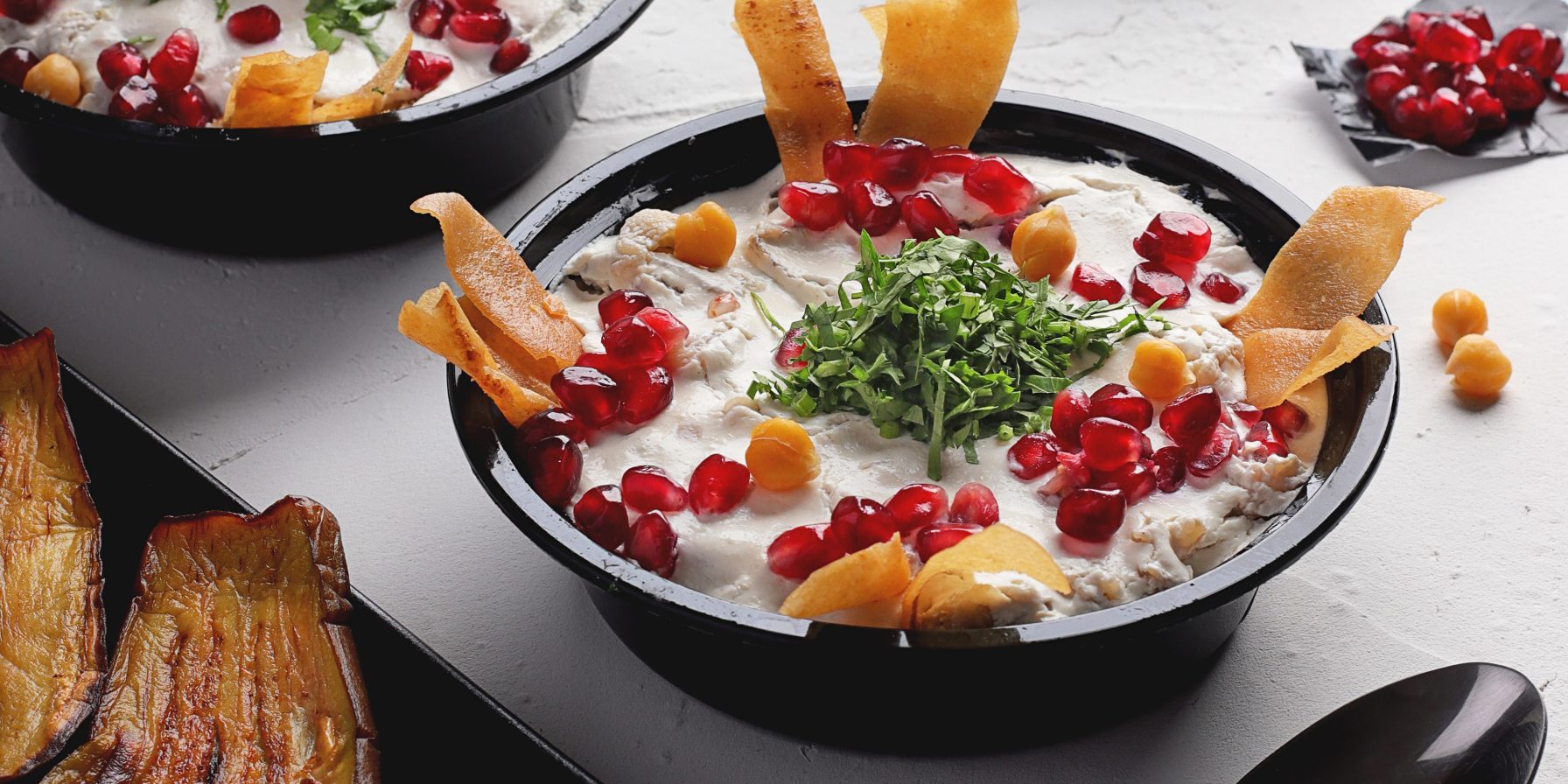
Savoury Lebanese Dishes
This week we are celebrating Lebanese cuisine. Lebanese food is among the healthiest cuisines in the World because of the ingredients and the way the food is cooked with low-fat options such as hummus, tabbouleh and other dips and salads.
Lebanese cuisine combines Turkish, Arab, and French cooking styles. Characteristics include the use of lamb (introduced by the Ottomans); the abundant use of nuts, especially almonds and pine nuts; and dressings made from lemon juice.
If you fancy a quick and easy meal we have a delicious 2-course Lebanese inspired recipe box available on our 5adaybox or Heritage at Home websites to buy. Check out our next blog for sweet Lebanese dishes.
Kibbeh
Cook time: 30 mins
Total time: 2 hrs 15 mins
Makes 24-30 pieces
Kibbeh is a unique mixture of soaked bulgur wheat and other ingredients, typically lamb meat, and it is also considered the national dish of Lebanon. Fragrantly spiced and eaten as a snack for casual or celebratory meals, Kibbeh can be raw, baked, fried, stuffed, or prepared in a vegetarian version, stuffed with potatoes, pumpkins, and tomatoes.
It is typically served with mint leaves and drizzled with olive oil. The word kibbeh stems from an Arabic verb meaning to form into a ball or a circular shape. A fried variety of kibbeh, called kibbeh nabilseeyah is shaped into a ball, stuffed, then fried in oil.
Source: The Mediterranean Dish, find the recipe here
Tabbouleh
Prep time: 20 mins
Serves 2
Tabbouleh is a colourful Lebanese national dish that is usually considered a salad, with a crunchy and chewy texture, made with fresh, finely chopped parsley leaves, olive oil, bulgur wheat, and chopped mint leaves as a base. It originated in the mountains of Lebanon and Syria, where edible herbs that are used in tabbouleh were consumed by Arabs since Medieval times.
Usually served as an appetizer, it is sometimes accompanied by pita bread, baba ghanoush, or hummus. Chopped red tomatoes, diced cucumbers, fresh lemon juice and minced onions can be added to the salad, imparting a tangy flavour. It is best to refrigerate tabbouleh for a few hours before serving to improve its taste. Its refreshing flavours are ideal for a hot summer day, while bulgur provides a rich source of fibre, protein, and minerals, making tabbouleh one of the healthiest food options in Lebanon. Tabbouleh is so popular that it even has its own day, celebrated every year on the first Saturday in July.
Source: BBC Good Food, find the recipe here
Fattoush
Prep time: 15 mins
Serves 4
Fattoush is basically a Mediterranean fried bread salad that typically includes lettuce, tomatoes, cucumbers, radishes and fried pieces of pita bread. You can also add green peppers, green onions and parsley.
So, in Arabic, the word “fattoush” is derived from “fatteh” which literally means “crumbs.” As you can imagine, this Fattoush Salad is basically a hodgepodge of pita bread that’s been seasoned then fried (or toasted) in addition to other vegetables that are in season. For that reason, there are no rules when it comes to the vegetables you use in Fattoush! It’s a great base recipe that you can build upon and dress up how you’d like.
Source: Feel Good Foodie, find the recipe here
Hummus
Time: 15 mins
Serves 8
Easy
If you’ve never made hummus before, then you are totally missing out. Homemade Lebanese hummus is super easy to make, tasty, healthy and requires just a few simple ingredients.
The unique flavour of hummus comes from tahini, a sesame seed paste. You can usually find it in the ethnic section of your supermarket.
When served, it is typically dressed with a drizzle of olive oil and is then used as a dip for vegetables or a flavourful filling for flatbreads such as pita. Even today, not much is known about its origins, although the earliest mention of hummus dates back to 13th-century Egypt.
Ingredients
- 1 tin of chickpeas, skins removed
- 1 1/2 tbsp tahini
- 1/2 lemon, juiced
- 1 1/2 tbsp extra-virgin olive oil + 1 tbsp to drizzle on top
- 1/2 garlic clove, crushed
- 1/2 tsp salt
- 1/4 tsp cumin
- Paprika, to garnish
- Extra-virgin olive oil, to garnish
Method
Remove the skins from the chickpeas if you want a smoother hummus (it is laborious but I find it’s worth the hassle and if a few of you join in it’s done in no time).
Put the chickpeas in the bowl of a food processor and blend for 1 minute.
Add the tahini, extra virgin olive oil, lemon juice and keep mixing until it becomes creamy. Stop to scrape down the sides once or twice.
Add the garlic, salt and cumin and blend for 3-4 minutes until thoroughly mixed and smooth.
If it’s too thick add 1 tablespoon of water until the consistency is perfect.
Taste and adjust the seasonings, adding more salt or lemon if needed
Place in a shallow bowl, drizzle 1 tablespoon of olive oil, garnish with a few chickpeas and sprinkle with paprika (optional).
Serve the homemade Lebanese hummus immediately with flat bread or cover and refrigerate.
Enjoy!
Sfeeha (Lebanese meat pies)
Time: 1hr 15mins
Makes 15
There are MANY recipes out there for the dough and the stuffing, You may find the addition of tahini, pomegranate molasses and labneh (drained greek yoghurt) a bit strange but they do transform the taste of the meat and take it to the next level.
Recipe source: Hadias lebanese cuisine, find the recipe here.



